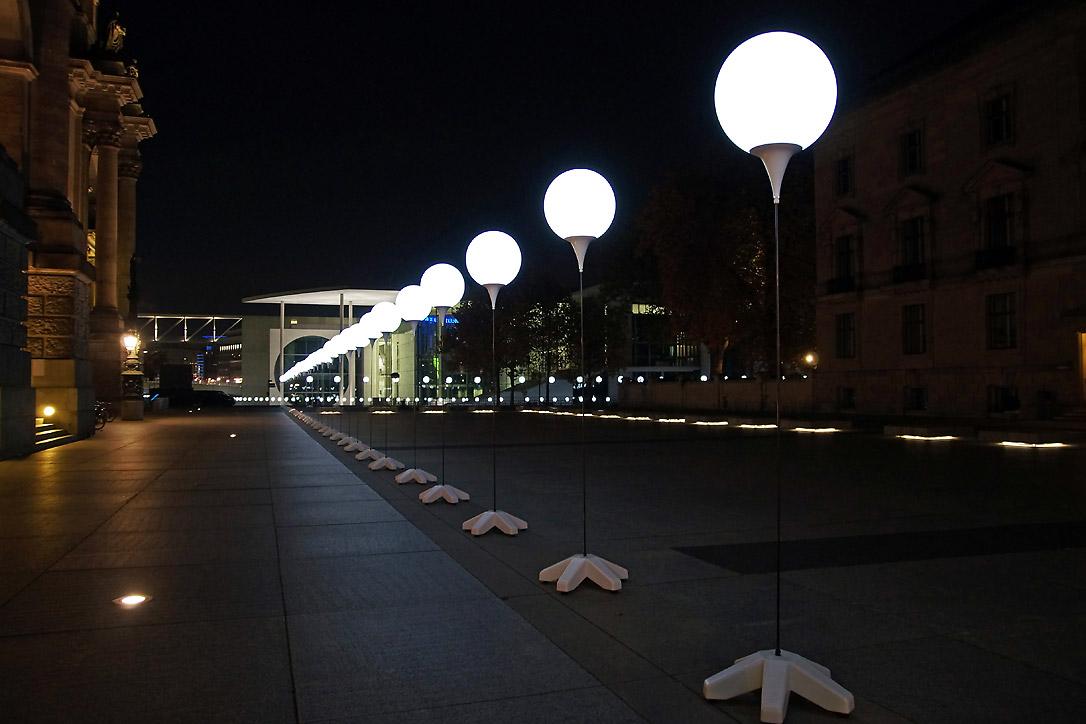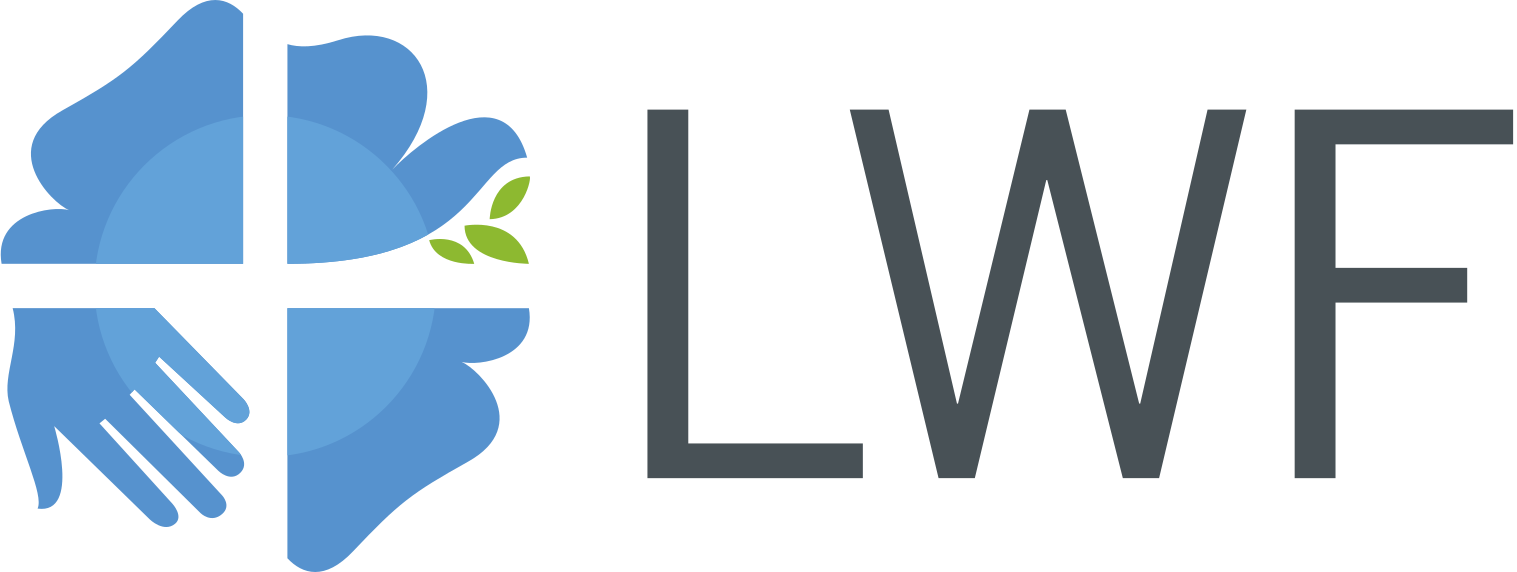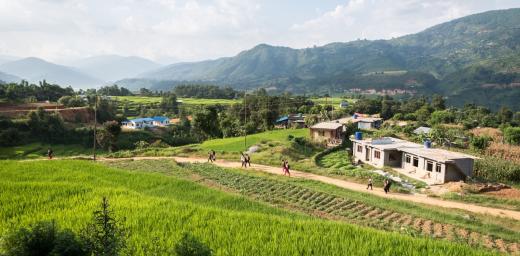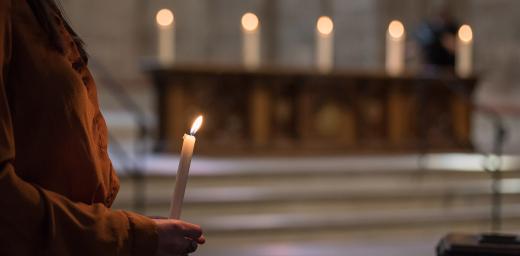“The Bible Shook up a Dictatorship”

With a symbolic
LWF interview with Rev. Harald Bretschneider on the Peaceful Revolution of 1989
(LWI) – The Peaceful Revolution that 25 years ago caused the fall of the wall dividing Germany to a great extend started in the churches. Former Rev. (retired) Harald Bretschneider was the youth pastor in Leipzig at the time. He founded several peace groups within the church, acted as a contact for oppositional groups in Saxony in autumn 1989, and took care of those imprisoned, especially during the Monday demonstrations.
In an interview with the Lutheran World Information (LWI), Rev. Bretschneider explains how the church was able to help bring down the regime.
Why did you start advocating for peace?
On 13. February 1945, my mother dragged me out of our house which had been completely destroyed during the Dresden bombing. I always wondered why I was saved that night while so many others perished. When I was 16, I refused to enlist with the army, and was not allowed to study architecture as a consequence.
I became a youth pastor in 1979 – the very year that the Soviet Union invaded Afghanistan. The Soviet Union’s nuclear missiles, which were not far from us in Kamenz, were placed on mobile vehicles. An incredible militarization of everyday life began in the GDR, the army was present from the cradle to the grave. The schools introduced Military Education as a mandatory subjects, manufacturers produced toy soldiers – everything of course with the stated ideal of striving for peace. The young people asked me what they should do. I knew then that I had survived to advocate for peace, and I joined with others to organize the first Decade for Peace in 1980. This was dead serious. Taken to its logical conclusion, the situation could have meant the end for of all of us – tabula rasa in Germany.
Working for peace and militarization
The patches worn during the Decade for Peace would later become a symbol of the opposition. How did that happen?
The motto of the Decade for Peace was “Swords to plowshares” (Micah 4:3). There is a statue dedicated to this quote by the Russian sculptor Yevgeny Vuchetich in Moscow. Nikita Khrushchev presented a copy of it to the United Nations, it can now be seen in front of the U.N. Headquarters in New York. I wanted to use a picture of the sculpture, and since I knew that I would not get permission to print leaflets with that, I had it printed onto fleece. This was officially called the “finishing of textile surfaces” and did not require printing permission. Young people would then use the fleece as a bookmark in their school books which in turn caused discussions in school. Their atheist teachers even looked it up in their grandmothers’ Bibles to see if it really was a biblical quote! Some of the young people also sewed it as a patch onto their clothes. A year later, we manufactured 100,000 bookmarks and 100,000 patches.
Why was this activity against a state that itself had always propagated peace and international friendship?
They said that this “unnuanced pacifism” was “detrimental to peace”, showed a “negative attitude toward our socialist defense”, unsettled future officers, and undermined military morale. It was practically absurd that while we were even allowed to watch peace demonstrations on West German television, we were not allowed to demonstrate for peace ourselves. Still it is curious how events unfolded. We just had a Bible quote and a Russian monument. If the Stasi (secret police) had just accepted that, nobody would have paid attention. But by banning it, they enabled a Bible quote to shake up the GDR dictatorship.
Why were these issues of social importance discussed in the church?
The church was the only social entity that was legitimized by the system but not integrated into it. They kept the question of God alive but also took a position on matters affecting people’s lives. There are democratic structures in the church it provides space to practice free discussions. These were important areas in preparing for the construction of a democratic society. We provided safe places for people to discuss matters involving environmental protection and human rights, when they had the feeling that the government was not telling them the truth. With a position which did not fall into categories of resistance or accommodation, confrontation or collaboration, the church earned the trust of the people.
“The leaven of the Gospel”
What role did young people play at the time?
Young people are like seismographs. They very accurately indicate threats to church and society. Our interactions and discussions with them were quite fruitful. I am still moved by how courageous and mature these young people were in taking the message of peace to the people – while bearing many disadvantages and hardships for that. It was breathtaking. They caused a Bible quote to be discussed on the streets of Saxony. This moved and pleased the church leadership, who took a clear position in support of the young people. The youth were the leaven of the Gospel, and lent the Gospel their hands and feet.
You were the contact person for the Monday demonstrations in autumn 1989. What are your strongest memories of this period?
There are a few events that I will never forget. The most important was the Monday demonstration in Leipzig on October 9. I knew of course that Leipzig’s hospitals were prepared for large numbers of gunshot injuries. After the prayer we silently walked the ring road around the city center, and when we came to the corner where the Stasi headquarters was located, it dawned on us that there would actually be no reaction. The officer in charge was apparently surprised by the number of demonstrators and realized that his forces would not suffice. Right after the demonstration, I drove to Dresden – of course not without accompaniment. Prayers for peace were still underway at the Kreuzkirche (Church of the Holy Cross) when I announced that no shots had been fired in Leipzig. First there was silence, collective exhaling, and then incredible cheering and applause. I still can’t find the words to describe it.
“Not without accompaniment” refers to the Stasi agents who were watching you the whole time. Were you afraid?
I was afraid many times. In 1982 I said goodbye to my wife before attending the Peace Forum for the Youth. We planned to publicly commemorate the Dresden bombing, and I was sure that they would arrest me for that. In 1984, I spoke out at the LWF Assembly in Budapest. After that, they didn’t want to let me back into the GDR. But in 1989 something inside me had changed. There was a new feeling of not being intimidated by authority. People were no longer so easily unsettled by the police.
Remaining attentive and watchful
Did you expect the wall to come down?
Yes, I took the biblical number 40 seriously and always saw German reunification as a goal. And yet, it was a gift and not an accomplishment. I am very grateful for the support of my family and the church at the time. The LWF also accompanied us with attention and compassion. It was only due to the decision to hold the LWF Assembly in Budapest in 1984, and to introduce a youth assembly, that we were able to take part with 50 young people. I will never forget that.
Today you give witness to young people. What is it that you would like to tell them?
I’d like to make young people understand the strength of repentance and atonement as a basic attitude of faith, and to never forget God’s goodness in connection with historical events. He opens up possibilities in our human impossibilities. Also, it is necessary to remain watchful. God’s word helps us to live critically in the present. We are liberated from idolizing the temptations of the market economy. Faith helps us find the meaning and orientation needed to uphold values, which in turn is the only thing that can maintain peace in the world. I talk about history to motivate for the present – against weapon trade, greed, and social marginalization.





